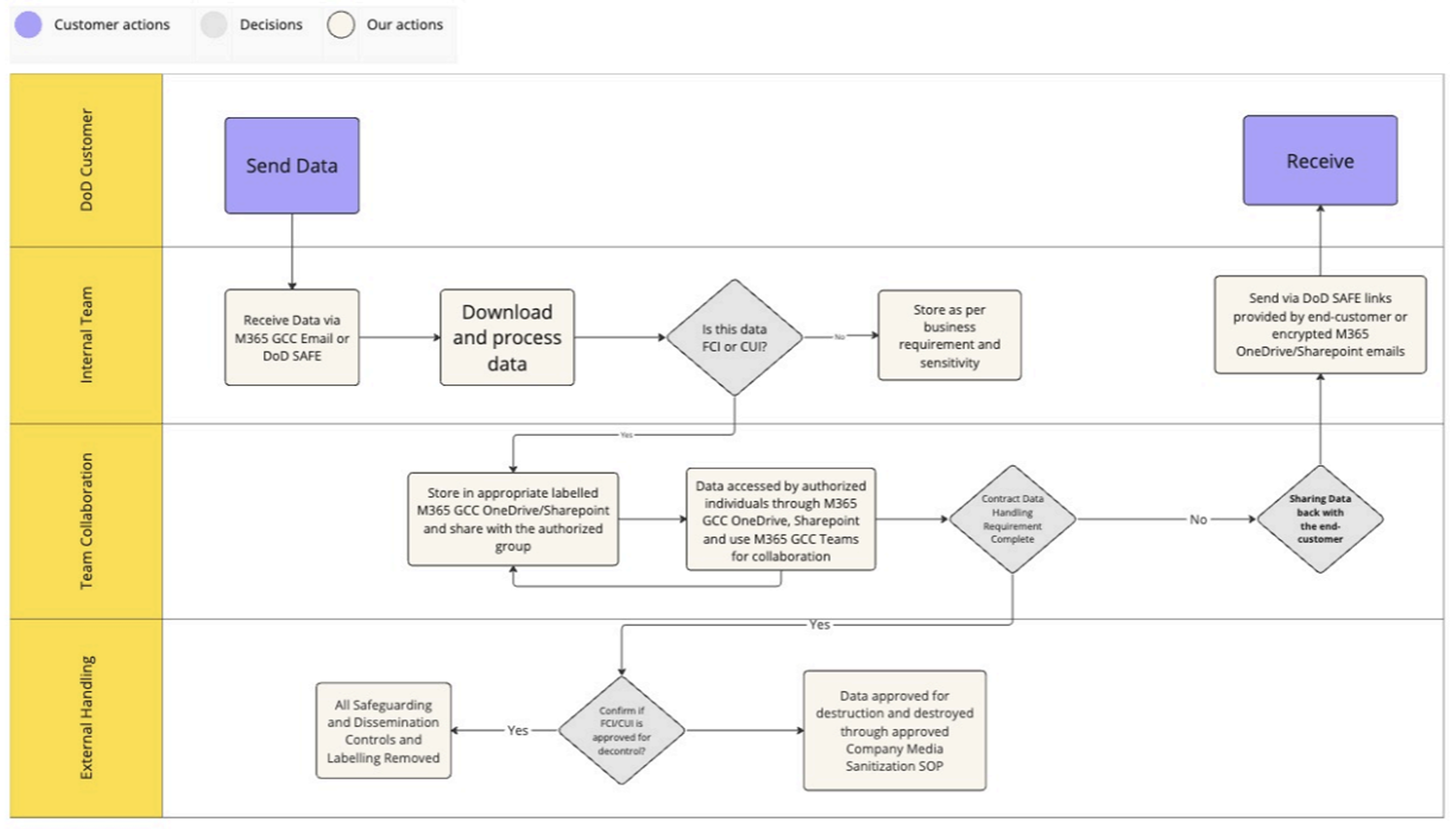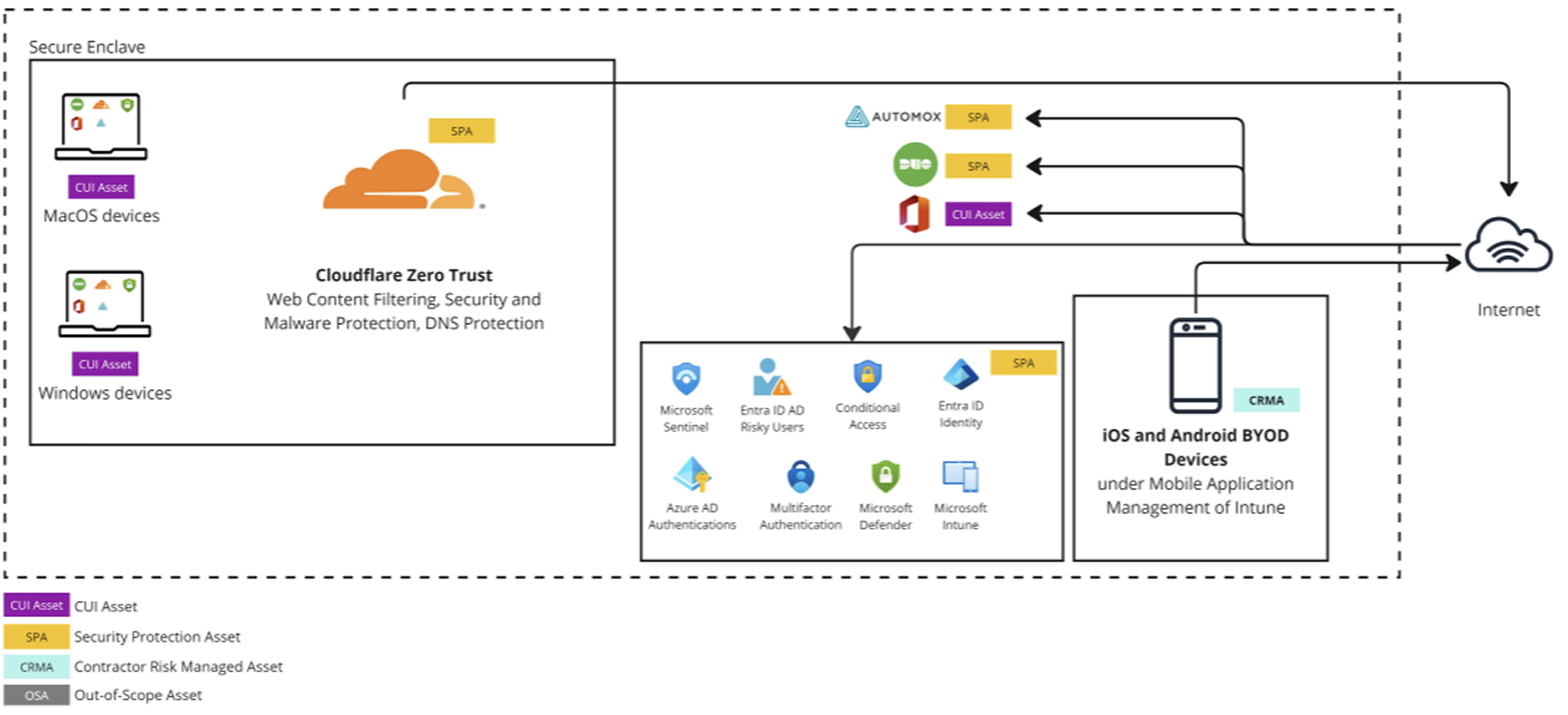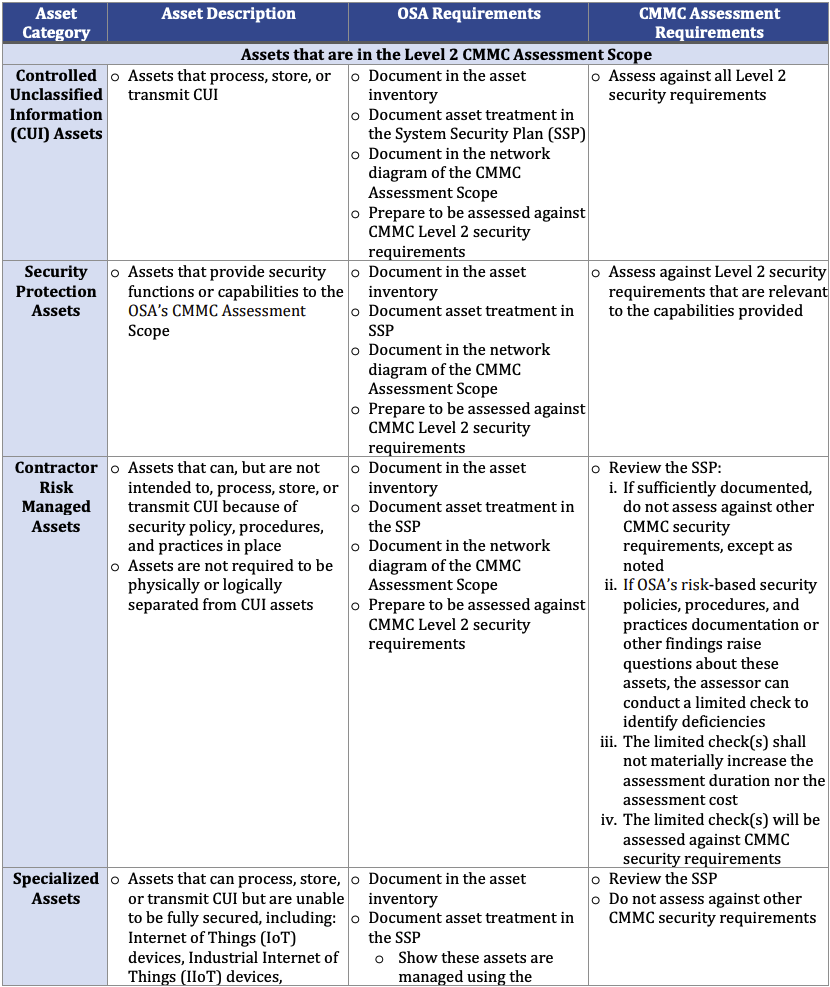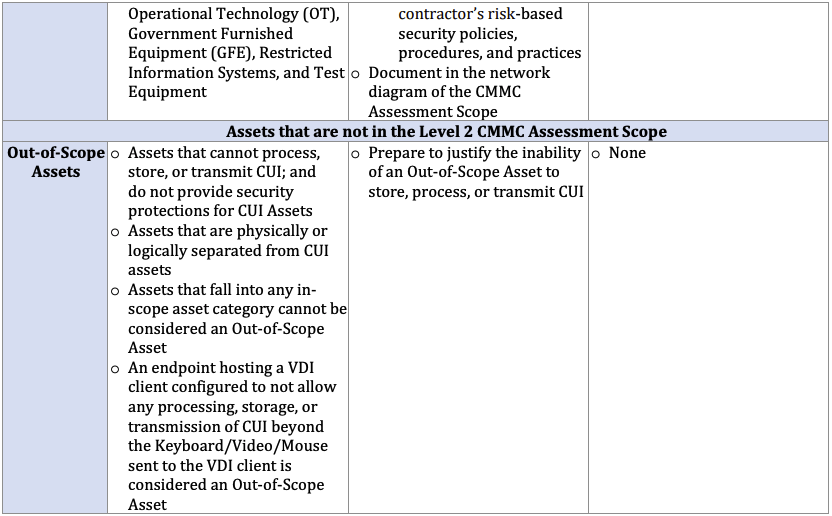Once you’ve identified contracts, CMMC risk, and timelines, the next step is to complete a scoping call. The goal is to develop a clear understanding of how Controlled Unclassified Information (CUI) moves through your organization and what assets fall within the compliance boundary. This step lays the foundation for audit readiness and helps you avoid unnecessary costs.
Compliance
Compliance
Compliance
CMMC Scoping Calls
10/2025
5
min read
%20(13).png)
Why Scope is Important
The cost of implementing CMMC requirements is directly tied to the size of your scope. A larger scope means more systems, people, and processes to secure, which results in higher costs and longer timelines. A smaller, well-defined scope keeps compliance efforts efficient and manageable. Ultimately, understanding how CUI flows through your organization is the key to reducing costs, avoiding unnecessary work, and achieving audit readiness with fewer roadblocks.
Understanding Your CUI Flow
Understanding how CUI flows through your business is the first step in scoping. This includes identifying where CUI enters your systems and determining who has access to it. Mapping this flow is essential, as it prevents oversights that could expand your compliance boundary and make your CMMC effort more expensive than necessary.

Create a CMMC Scoping Diagram
Once the flow of CUI is clear, the next task is to create a scoping diagram that lists all IT assets that process, store, transmit, or protect CUI. Examples include email servers, SaaS products, local file servers, Git repositories, and SolidWorks servers. A visual diagram provides assessors and internal teams with a clear picture of your environment and can reveal opportunities to reduce scope by isolating CUI away from systems that don’t need to be included.

Go Through the CMMC Scoping Guide
After identifying assets, each one must be classified using the CMMC Scoping Guide. Assets fall into one of five categories: CUI Assets, Security Protection Assets, Contractor Risk Managed Assets, Specialized Assets, or Out-of-Scope Assets. This structured approach reduces confusion, ensures alignment with CMMC requirements, and has direct implications for the number of controls you must implement. Correct classification is critical for planning and cost management.


Create a Technical Project Plan:
The final step of the scoping process is developing a technical project plan. This plan details the remediation work needed to bring your environment into compliance. With this you will have pricing, a timeline, and who is responsible for a certain task, turning the results of scoping into a practical roadmap for reaching and maintaining compliance.
.avif)
.webp)


.webp)
.avif)


